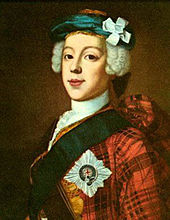James Frances Edward Stuart (the “Old Pretender”) and his son, Charles Edward Stuart (th
James Frances Edward Stuart (the “Old Pretender”) and his son, Charles Edward Stuart (the “Young Pretender”) were claimants to the English, Irish, and Scottish thrones in the first half of the eighteenth century. James Frances Edward Stuart’s birth prompted fears of the continuation of Catholic rule in England, as his father, King James II, had converted to Catholicism (the presumptive heir prior to his birth, his half-sister Mary, had been raised Protestant). During the “Glorious Revolution” (1688) James II was deposed by the Protestant William of Orange, the husband of his daughter Mary. After James II’s death in 1701, James Frances Edward Stuart, called the “Old Pretender,” began a series of campaigns to regain the throne, called the Jacobite uprisings. The most significant efforts were uprisings in Scotland in 1715 and again in 1745, the latter headed by his son, the Young Pretender Charles Edward Stuart. The defeat of the Jacobites at the Battle of Culloden in 1745 essentially ended the Jacobite movement. The 1745 uprising provides the backdrop for Sir Walter Scott's Waverley (1814), which romanticizes the movement, particularly the involvement of the Highland Scots. -- source link
#eighteenth-century culture#jacobite#old pretender#young pretender#glorious revolution

